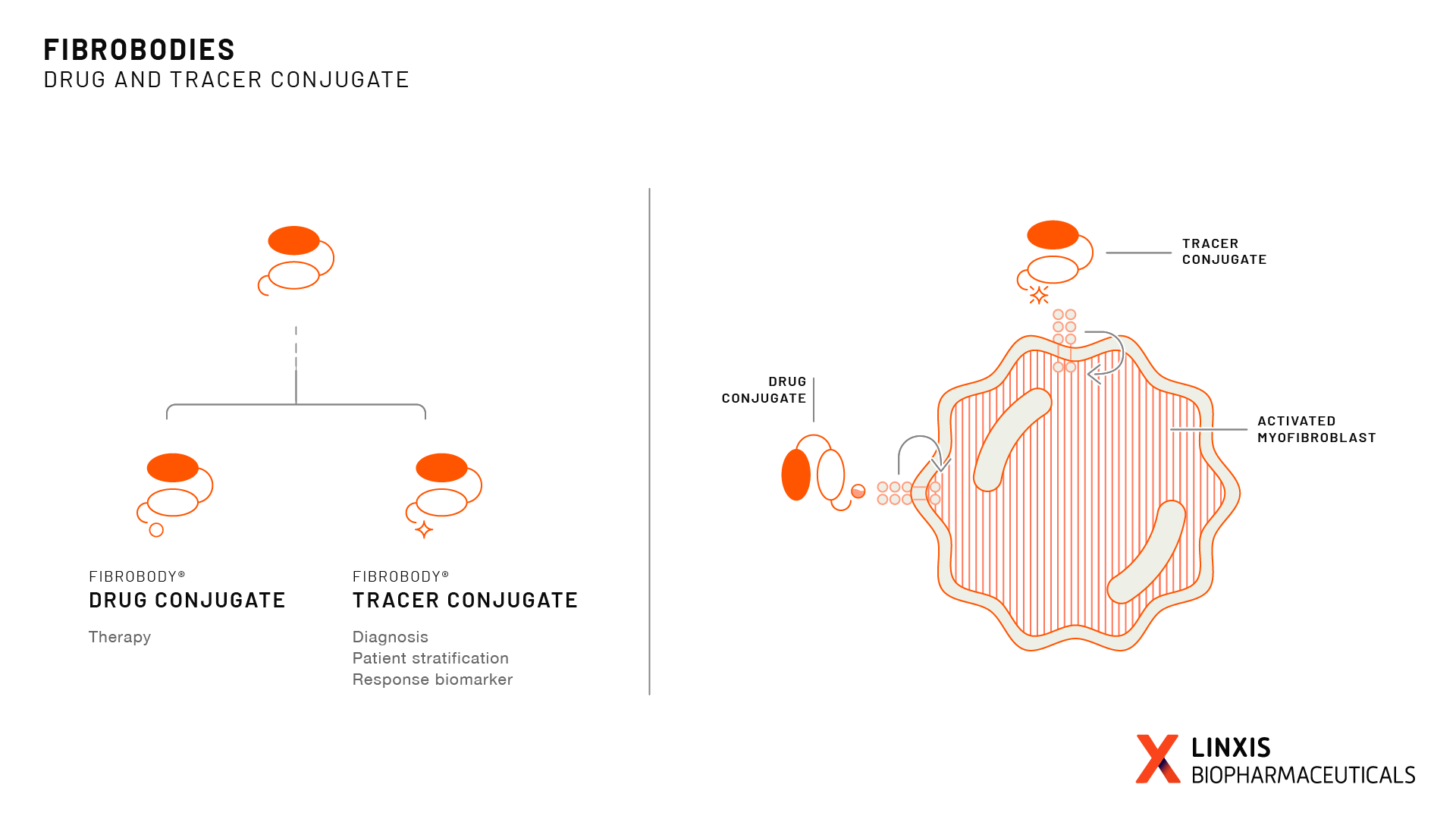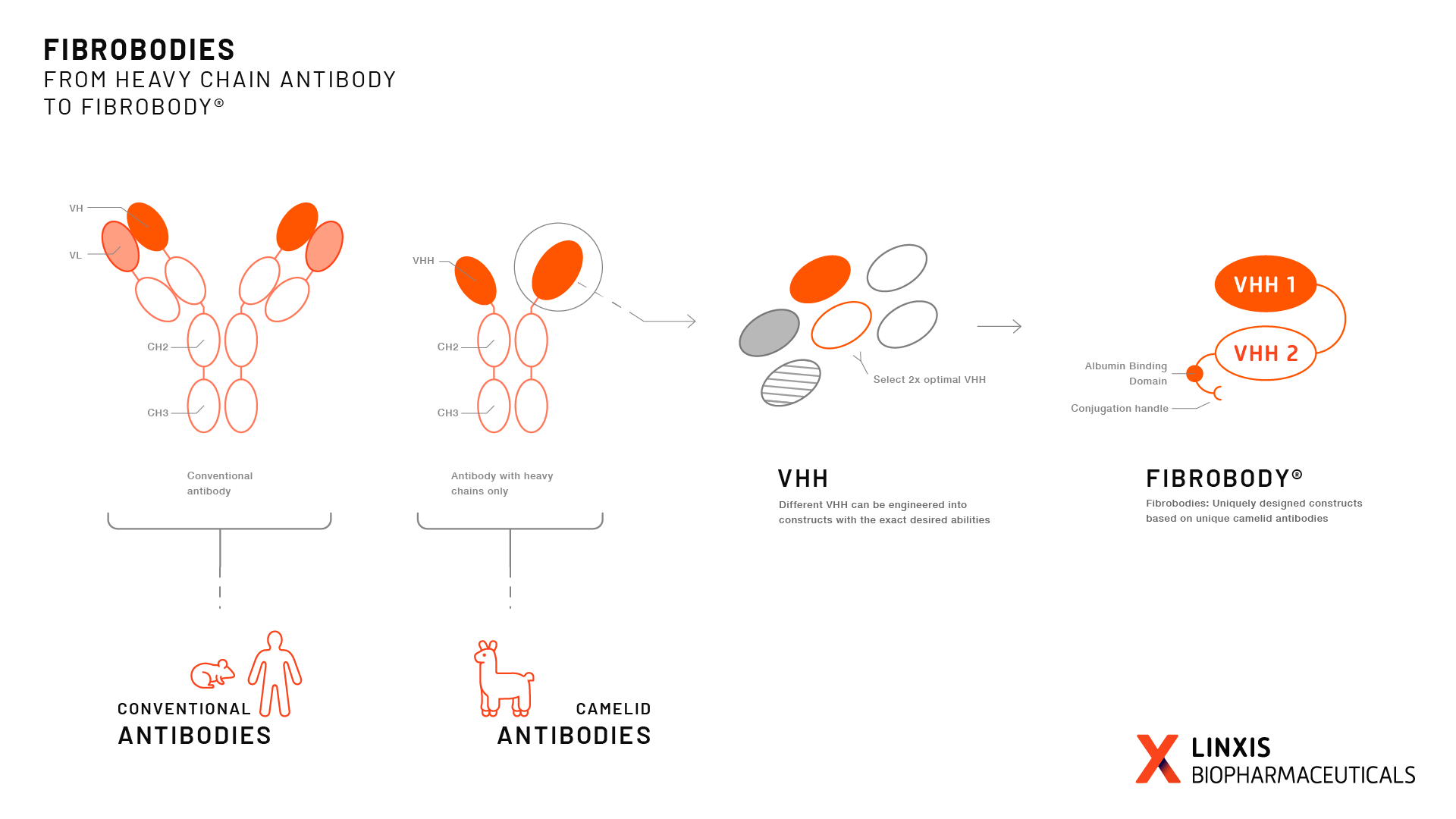Science: Fibrobodies®Fibrobodies as first-in-class delivery vectors
Fibrobodies as first-in-class delivery vectors
With Fibrobodies®, we can tackle the two most challenging problems in fibrosis: Timely diagnosis, and safe and effective treatment.
Fibrobodies®
Fibrobodies® recognize and bind to molecules that are highly expressed on the surface of activated myofibroblasts, the cell type that is a key driver of fibrosis. Once a Fibrobody® binds to an activated myofibroblast, it enters the cell to release its cargo - be it a tracer or a drug.
Our lead Fibrobody® recognizes PDGFRB and has been extensively validated in various preclinical models. Follow-up Fibrobodies® that recognize other established and experimental targets on the surface of activated myofibroblasts are underway.

Technology
Fibrobodies® are based on specialized antibodies that are only found in camels, llamas and alpacas. These antibodies contain specific elements that are known as VHH domains. To generate Fibrobodies®, we carefully select and combine ideal combinations of VHHs.
Fibrobodies® are designed to be species-cross reactive. This means that success in the laboratory will translate into clinical success. In addition, Fibrobodies® are small and stealthy: they penetrate deep into dense fibrotic tissues without activating the immune system.
Most importantly, Fibrobodies® can be used as carriers for tracers or drugs, enabling the diagnosis and treatment of fibrosis.
